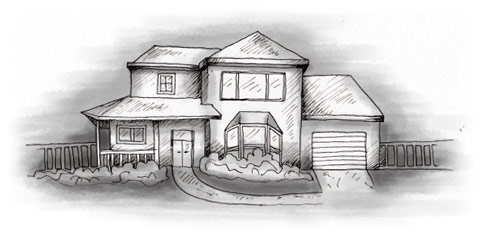The most common examples are the many farmhouses that have been almost totally neglected since they were built in the 18th and 19th centuries and were often abandoned many years ago. In general, the Italian attitude to old buildings is one of almost total neglect and many are literally in danger of falling down, when complete rebuilding is often necessary.
A building sold as requiring renovation ( da restaurare or ristrutturare) in Italy is usually in need of substantial work (rebuilding may be a more accurate description). Partly renovated ( restaurato/rinnovato parzialmente) usually means that part of a building is habitable, i.e. it at least has sanitation, but the rest is in need of restoration ( da ricostruire). The most dilapidated ‘buildings’ are ruins ( ruderi) consisting of just a few walls without a roof.
SURVIVAL TIP
Before buying a property that needs renovation or restoration, it’s vital to obtain accurate estimates of the work involved from one or more reliable local builders. You should budget for costs to be up to 100 per cent higher than quoted, as it isn’t unusual for the costs to escalate wildly from original estimates.
Before buying a property requiring restoration or modernisation, you should consider the alternatives. An extra €25,000 to €50,000 spent on a purchase may represent better value than spending a similar amount on building work. It’s often cheaper to buy a restored or partly restored property than a ruin in need of total restoration, unless you’re going to do most of the work yourself.
The price of most restored properties doesn’t reflect the cost and amount of work that went into them, and many people who have restored a ruin would never do it again and advise others against it.
Geometre
If your property requires major restoration, your first step should be to find a reputable geometra, a professional (probably unique to Italy) whose job is a combination of those of an architect, engineer and surveyor. Geometre are listed in the yellow pages (www.paginegialle.it ) under Certificati Agenzie.
A geometra’s main tasks are dealing with the paperwork involved in planning applications (a local geometra may know the ‘right people’ in the ‘right places’), drawing up the plans and specifications for the restoration and overseeing the restoration work. His help is vital if you’re a foreigner and don’t speak Italian fluently – even if you do, you can save considerable time and stress if you employ one.
Ask around locally for recommendations (e.g. from an estate agent) and visit restoration work overseen by a recommended geometra.
SURVIVAL TIP
The geometra will be your right-hand man in practically the entire restoration process and you should choose someone who’s highly recommended and who you can trust, particularly if you cannot be on site to supervise restoration work yourself.
A geometra usually visits the site every month or two or when stage payments are made. A good geometra will provide detailed information and progress reports after visits, e.g. via e-mail using digital photography. Fees vary, but are usually from 5 to 10 per cent of the value of the restoration work depending on the amount of work the geometra has to do.
Checks
It’s important to ensure that a property has sound walls. Properties that have walls with serious defects are best avoided, as it’s usually cheaper to erect a new building! Almost any other problem can be fixed or overcome at a price
A sound roof that doesn’t leak is desirable and making a building waterproof is the most important priority if funds are scarce. Don’t believe a vendor or agent who tells you that a roof or anything else can be repaired or patched up, but obtain expert advice from a local builder.
Sound roof timbers are also desirable, as they can be expensive to replace. Old buildings may also need a damp-
proof course, timber treatment, new windows and doors, a modern
kitchen and bathroom, re-wiring and central heating. You should also
check a building for leaks (e.g. after a rainstorm) before investing in expensive decoration.
In earthquake-susceptible areas, structural restorations can be done using a ‘minimal intervention unit’ ( Unità Minima d’Intervento/UMI), by which the walls and adjoining structures of buildings in historic centres are reinforced, providing major resistance against seismic movements in old buildings. In some areas, e.g. Tuscany, these reinforcements are compulsory in any restoration work. UMI reinforcement involves a 15 to 25 per cent increase in renovation costs.
This article is an extract from Buying a Home in Italy from Survival Books.

